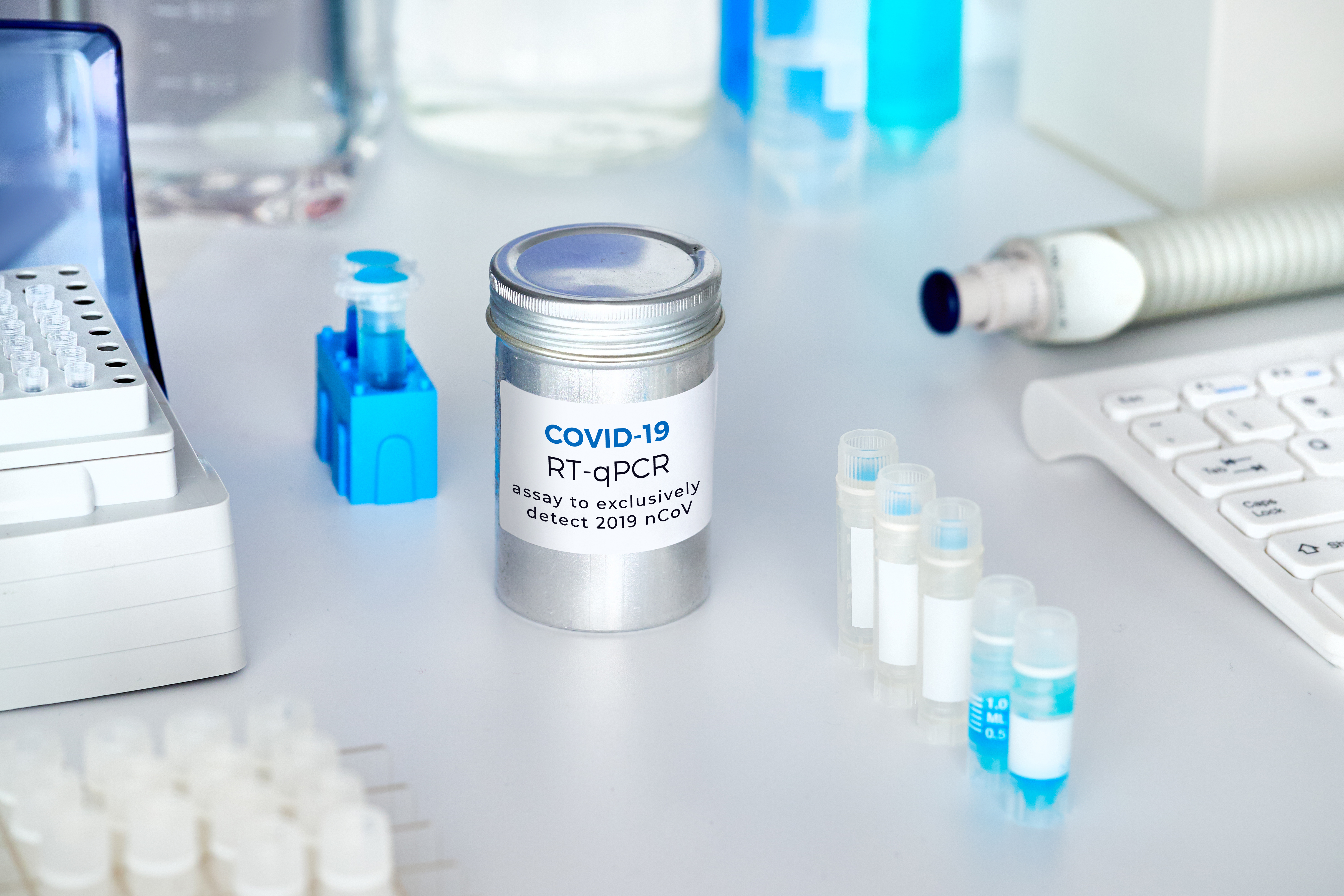Taking Measure
Just a Standard Blog

Many of us have taken a COVID-19 test. But, have you ever wondered, after your sample goes off to a lab, exactly how they arrive at a positive or negative result? My colleagues and I are working to make these excellent tests even more informative in ways that could improve diagnosis of COVID and many other diseases.
The development of the clinical COVID test is a triumph of molecular biology and applied genetics. The most common version of the test is based on a powerful, and widely used, lab technique called the polymerase chain reaction (PCR).
When you look at your sample, you can’t tell whether COVID is present, as the virus’s genetic code is too small to be seen by the naked eye. The PCR test multiplies the virus’s genetic code 40 times, sometimes producing millions to billions of copies of the original genetic code.
But the copying process is not perfect. Think of it like making copies of copies on a copier 40 times. If one of the papers is not perfect, it’s going to affect many of your later pages.
The PCR test keeps track of this copying process. If the copying is successful, you can see evidence of fluorescent dye. The measurement of the fluorescence at the end of the test indicates whether the PCR test is positive.
While the PCR-based test is the gold standard for diagnosis of COVID-19, it can be less accurate when the amount of virus in a sample is very small. In this case, small errors in transferring portions of your sample between test tubes and tiny imperfections in copying the DNA can lead to significantly different fluorescence measurements. (Thinking back to the copy machine analogy, a very small mark could get lost in lots of copies.) This may result in a need to take multiple tests or could result in an incorrect positive or negative result.
If you have had COVID-19, you may have had a negative test result shortly after infection and tested positive later. That may be because your viral load was low at the time of the first test. An asymptomatic person with a small viral load may unknowingly spread the virus to others, especially if their PCR test came up negative.
Our Study
Here at NIST, we developed a new mathematical model to characterize the likelihood of a test result being incorrect.
Our model quantifies uncertainty in measurements, while accounting for imperfect copying of DNA and linking fluorescence to DNA (the more DNA is copied, the more fluorescence increases).
Specifically, it can tell us how the measurements would change if a very large number of tests were performed. The goal of our model is to determine the likelihood that one result out of hundreds or thousands would be inaccurate.
Clinically, a lab could implement our model by adding an asterisk to a test result, instead of simply positive or negative, to indicate a possible inconclusive result. This would allow people to make more educated decisions about coming in contact with others if they might have COVID-19.
What This Means for Other Tests
The PCR test became part of everyone’s vocabulary a few years ago, but the technique was widely used before the pandemic and for many applications outside of COVID-19.
In forensics and food safety analysis, PCR testing is used to detect specific sequences of molecules that contain genetic information, known as nucleic acids (such as human or bacterial).

In health care diagnostics, the fluorescence-based PCR test is regularly used to extract important information from samples. For a given genetic sequence, the goal is not only to detect it, but also to calculate how much was in your sample. This is crucial for measuring gene expression, which enables scientists to understand biological processes and identify biomarkers for early detection of cancer.
The number of nucleic acids in a sample is not measured directly. Instead, researchers infer the number from fluorescence measurements using a mathematical model.
Our model can improve the PCR test process by giving patients and providers more information. Our goal is to empower medical providers to make the best-informed diagnoses for their patients. Better measurement in PCR tests can mean improved health care, not just in treating COVID-19 but in many other types of medical tests.
My Passion for Measurement Started Young
I have been interested in using mathematics and statistics to extract useful information from measurements for as long as I can remember.
When I was a child, my favorite hobby was building model rockets and launching them. I loved launching them into the sky, but I was always a little disappointed I did not know how high they flew.
This led me to estimate the height of a rocket by standing 30.48 meters away (or 100 feet because I did not work at NIST as a child) from the launchpad and using a protractor to estimate the angle of the rocket at its highest point.
From this measurement, I used trigonometry to approximate the height of the right triangle as the maximum height of the rocket’s trajectory.
I had originally planned to be a doctor, but that involved more biology than math, and math was my main interest.
So instead, I became a chemical engineer. Working at NIST allowed me to be a part of an agency with a diverse set of skills, where people work together on interesting and challenging questions, such as how to improve PCR tests. The variety of expertise is one of the reasons I love working at NIST.
What’s Next in our PCR Research
In the future, we are excited to extend this work to additional health care diagnostics.
The goal of quantitative PCR is to quantify the number of copies of DNA that are present in your sample. A very challenging addition to this goal is to infer the uncertainty in the initial number of DNA copies.
The question is, can we work backward from the output of our measurement to infer things about the sample at the start? (Think of it as taking a bite of cake and trying to figure out how many eggs the baker used to make it.)
To do this we need to solve a so-called inverse problem by examining the mathematical model backward. Inverse problems are notoriously challenging, as the solutions can change dramatically in response to small changes in the observed measurements.
We are motivated by the fact that progress in investigating the test in reverse time could lead to a new test, where both the initial sample concentration and uncertainty are quantified. By getting more out of each measurement, health care professionals could make more informed disease diagnoses.
This field has many possibilities for bringing math and science together to make us healthier. This makes me very excited to see what advances will come next.






Good luck in humanitarian work that benefits man and humanity I was hoping for a lot of possibilities and support and participation and interaction advanced research but there is someone better than me and you are experts and leadership we trust you ❤️